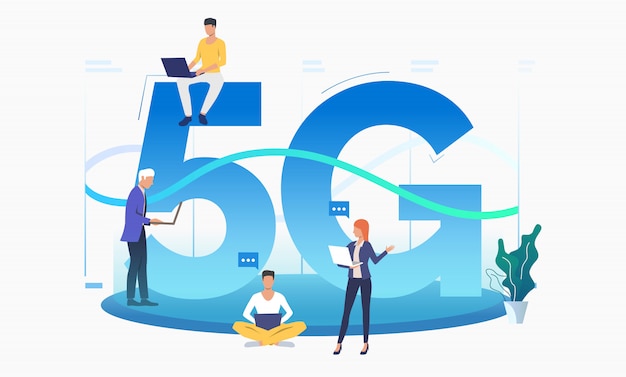In recent years, the advent of 5G technology has transformed various aspects of communication and connectivity, particularly in the realm of the Internet of Things (IoT). This article explores how 5G is enhancing IoT capabilities, its benefits, and the potential it holds for the future.
Introduction to 5G Technology and IoT

5G, the fifth generation of mobile networks, promises significantly faster data speeds, lower latency, and increased capacity compared to its predecessors. This leap in connectivity is poised to revolutionize IoT applications by enabling a multitude of devices to communicate seamlessly and efficiently.
How 5G Enhances IoT
1. Increased Bandwidth and Speed
5G networks offer significantly higher bandwidth and faster data speeds compared to 4G. This means IoT devices can transfer and process larger amounts of data in real-time, enhancing applications like video surveillance, autonomous vehicles, and industrial automation.
2. Lower Latency
5G’s ultra-low latency (1-10 milliseconds) enables real-time communication between IoT devices and systems. This is crucial for applications that require immediate responses, such as remote surgery, smart grid management, and augmented reality.
3. Massive Device Connectivity
With 5G, IoT networks can support a massive number of connected devices per square kilometer, paving the way for widespread deployment of IoT solutions in smart cities, smart homes, and industrial IoT (IIoT) applications.
4. Network Slicing
5G introduces network slicing, which allows network operators to create multiple virtual networks within a single physical 5G network. Each slice can be optimized for specific IoT applications, ensuring better resource allocation and network performance.
5. Enhanced Energy Efficiency
5G networks are designed to be more energy-efficient than previous generations, prolonging the battery life of IoT devices. This is critical for IoT applications in remote locations or where frequent battery replacement is impractical.
Benefits of 5G for IoT

– Improved Reliability: 5G networks offer higher reliability and stability, reducing downtime and ensuring continuous operation of IoT devices.
– Global Coverage: As 5G networks expand globally, IoT devices can operate seamlessly across different regions, promoting international IoT deployment.
– Innovation: The capabilities of 5G enable the development of new IoT applications and business models, fostering innovation in various industries.
FAQs About 5G and IoT
Q: How does 5G impact IoT security?
5G enhances IoT security through network slicing, enabling isolated networks that can be secured independently. This reduces the risk of cyber-attacks.
Q: Will 5G replace Wi-Fi for IoT devices?
5G complements Wi-Fi by offering a cellular alternative for IoT connectivity. Both technologies will coexist to meet diverse IoT deployment needs.
Q: What are the challenges of integrating 5G with existing IoT infrastructure?
Challenges include upgrading legacy IoT devices to support 5G, managing increased data volumes, and ensuring compatibility with existing network architectures.
Conclusion
In conclusion, 5G technology represents a significant advancement for the Internet of Things, unlocking new possibilities for connectivity, speed, and reliability. As 5G networks continue to roll out globally, the full potential of IoT applications across industries will be realized, making our cities smarter, industries more efficient, and daily lives more connected.
For more insights on technology trends and updates, visit TechRays, your go-to source for the latest in technology.

